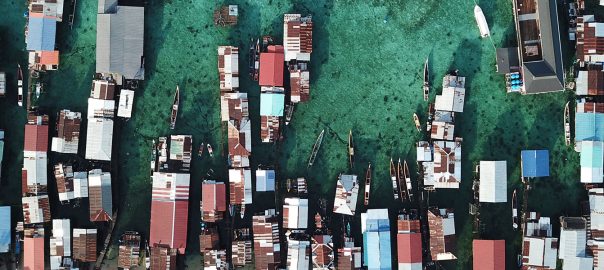
During the annual United Nations’ Framework Convention on Climate Change Conference of Parties (COP27) in November 2022, the United States announced a variety of new climate adaptation initiatives, including over $150 million in new support to accelerate the President’s Emergency Plan for Adaptation and Resilience (PREPARE). This is a promising sign of change because donors have historically underfunded adaptation projects compared to mitigation. However, donors and country governments must address certain challenges inherent to adaptation before they can make considerable progress on climate resilience.
The Challenges of Adaptation
One key challenge discussed at COP27 is that there are no one-size-fits all metrics for tracking progress on adaptation. Unlike climate mitigation targets—such as carbon emissions reductions—adaptation metrics are not obvious. What does adaptation success look like globally, at the national level, or in a community? With the increasing severity and frequency of extreme weather events, coupled with the impacts of slow-onset climatic changes and compounded by socioeconomic and sociopolitical factors, adapting to climate change is a constantly moving target, which makes measuring success more difficult.
The other main challenge is that adaptation success is difficult to distinguish from general international development success as they often have the same goals, such as reduced poverty, malnutrition, and socioeconomic vulnerability. Adaptation co-benefits may be derived from activities that did not include adaptation as the primary goal. For example, through the USAID/Feed the Future Integrated Community Agriculture and Nutrition (ICAN) project in Uganda, the project team worked with village health teams to improve health by developing community resilience plans, which included training around seasonal rains to reduce the likelihood of childhood malaria or diarrhea, among other similar interventions. The U.S. Government’s PREPARE action plan prioritizes building the resilience of health systems and services to climate risk. PREPARE could learn from ICAN by integrating adaptation approaches with health and nutrition programming to meet both climate and health targets in a holistic manner
The Road Ahead
Increased finance for adaptation is a welcome and necessary outcome from COP27—but it is not enough on its own. To address key challenges, donor agencies and implementing partners should consider the following recommendations.
Define success: Adaptation is a process, not an end goal. Defining success can help clarify relevant measures. Climate and development actors must collaborate with local communities and country governments to define adaptation progress and associated metrics, ensuring these reflect local contexts and traditional knowledge.
Integrate: Governments have not emphasized adaptation consistently across policies in different sectors, leading to underinvestment in many cases. As emphasized by PREPARE, development implementers should work with governments and local actors to integrate climate resilience into sectoral (e.g., health, agriculture, economic growth) programming. This creates new and cost-effective opportunities for cross-sectoral investments that break programming silos and promote integrated programming.
Strengthen capacity: There is only one data scientist in Africa for every 14 in the Global North, making it difficult for African countries to develop evidence-based adaptation policies. Donors should facilitate South-South learning as well as capacity strengthening of sectoral experts in the Global South to increase the generation and use of data and forecasts for policy and decision making.
Embrace uncertainty and flexibility: Development actors must work with local governments and communities to develop flexible and equitable evidence-based adaptation pathways that allow for adjustments to changing circumstances and information without locking-in investments based on certain assumptions or scenarios.
As the international community moves towards COP28 and the first Global Stocktake, 2023 will be a pivotal year for identifying adaptation metrics and moving the needle on climate resilience. By building on the above recommendations, USAID and its implementing partners can support climate-exposed and vulnerable communities around the world as they define adaptation success.
In November 2022, the authors, as part of a team of Abt Associates experts, took part in the COP27 meeting in Sharm El-Sheikh, Egypt.

Dr. Jennifer Denno Cissé
Dr. Jennifer Denno Cissé leads Abt’s Climate Adaptation and Resilience practice, applying her risk and resilience expertise to serve as the climate adaptation technical lead for public and private sector clients. Before joining Abt, Jenn served concurrently as an Associate Academic Officer at the UN University Institute for Environment and Human Security and a Senior Research Manager at the Munich Climate Insurance Initiative. She previously held the position of Senior Risk Advisor for USAID’s Bureau for Food Security. She has a PhD in Applied Economics and Management from Cornell University. LinkedIn




